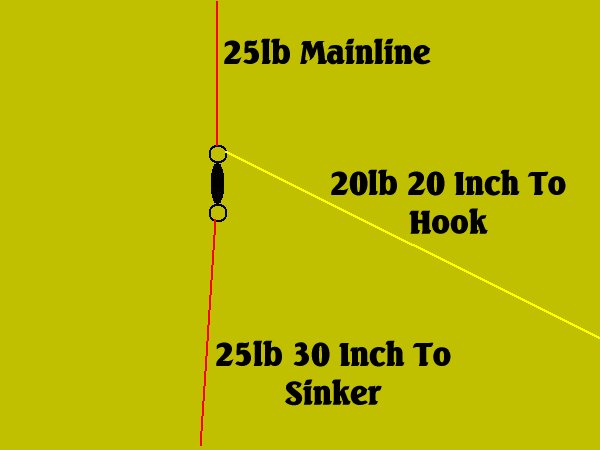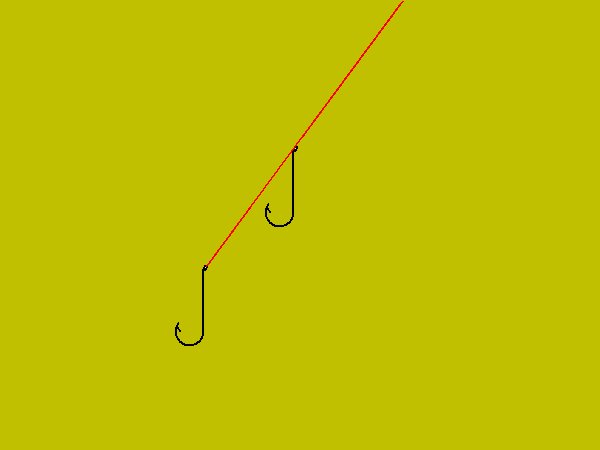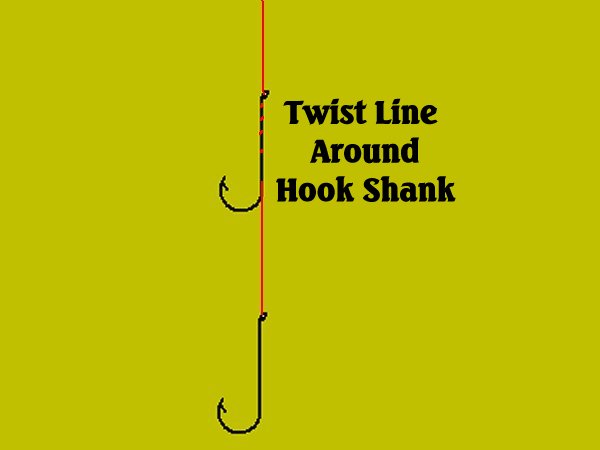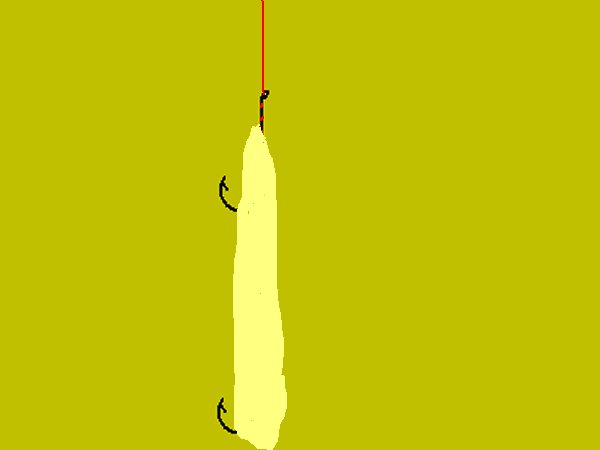|
Some people have asked me what is the best rig to
use when rough ground fishing to try to cut down tackle losses.I honestly don't have a definative answer to that,and I can
only show you the rig I personally use when fishing rough,kelpy ground.I'd have to say first that I've tried rotten bottoms,gripping
sinkers etc,but I find that more often than not I lose much more sinkers with rotten bottom links,and much more traces when
they have more "bits" on them like bait clips.So I stick to this very basic rig on 25lb line,which is maybe lighter line than
others fish on this ground,but my own opinion is that heavier line,means a better hold to the snag,and is therefore more likely
to snap off everything when pulled.
Basic Rough Ground Rig

And that's it.I tie the top eye of a swivel directly to my mainline,the bottom
eye to my sinker,and my slightly lighter hook snood to the same top eye.
Float Rig
One of my favourite forms of fishing is on the float.Over the years I've used all
sorts of bought floats with varying success,but always felt that they were too small to cast any distance,and too hard to
see if you did manage to get it out a decent way.I therefore started making my own floats from soft drinks bottles which will
easily take a 6 ounce weight,and so allow quite good distance on casts,and are highly visible at distance.To make these check
out my DIY site,address on the home page of this site.

This rig is really simple to tie up.Firstly,thread your mainline through a small bead,a
large bead,your float eye,your sinker eye,and tie on your hook.Tie your sinker around 18 inches up from the hook.Take a small
piece of mono,or power gum,(I use plain mono and it works fine),and tie an ordinary double reef knot around your mainline
and nip of the tags as close as possible to the knot.This knot should now slide up and down your mainline by using your thumb
nail to adjust for depth.
Ideally you use this rig on kelpy ground,with your bait fished over the tops of the
kelp.To do this set your stop knot to whatever depth you think the water may be at the spot you're aiming to cast to,and chuck
it out.(you may want to do this without a hook tied on to start with incase it gets snagged).If the float 'cocks' you're too
shallow.If the float lies on it's side,you're too deep.Bring your float back in and adjust your stopknot up or down until
you have the depth of the water.This will be correct when the float cocks when the peak of a wave comes,and lies over when
the trough comes.When you have this depth,take in your float one more time,and move your stop knot 4 feet down the line to
allow for the height of the kelp.You're now ready to fish.
Great takes are on the cards here as fish come up quickly from the kelp,and dive back
down with your bait,and hook,in tow.The bouyancy of these floats also help enormously to 'set' your hook.
Pennel Rigs
Most experienced sea anglers will know very well what a pennel rig is,but I have had
a couple of emails asking for some information on it,so here goes.
Basically a pennel rig is a way of using two hooks in the same large bait.The benefits
are twofold.
1, Whichever end of the bait the fish bites,there is a hook in it.
2,The topmost hook stops the bait slipping down and bunching up over the bottom hook.
To tie one simply pass the hooklength through the eye of one hook,without tying it,and
then tie it to your second hook.Some people like to use a smaller hook for the top one,but it's your own choice whether to
do that or not.The rig works equally well with any sizes of hook.

Then simply wrap the hooklength around the shank of the top hook several times.

Now,when you bait up your bottom hook as normal,slipping the bait over the top of
the bottom hook and up the line,put the point of your top hook through the top part of your bait,and bind up with bait elastic.

And that's it.Two hooks in the same bait.Very popular for cod fishing this,but mind
out if the ground is very kelpy as two hooks offers two chances to snag.
|

